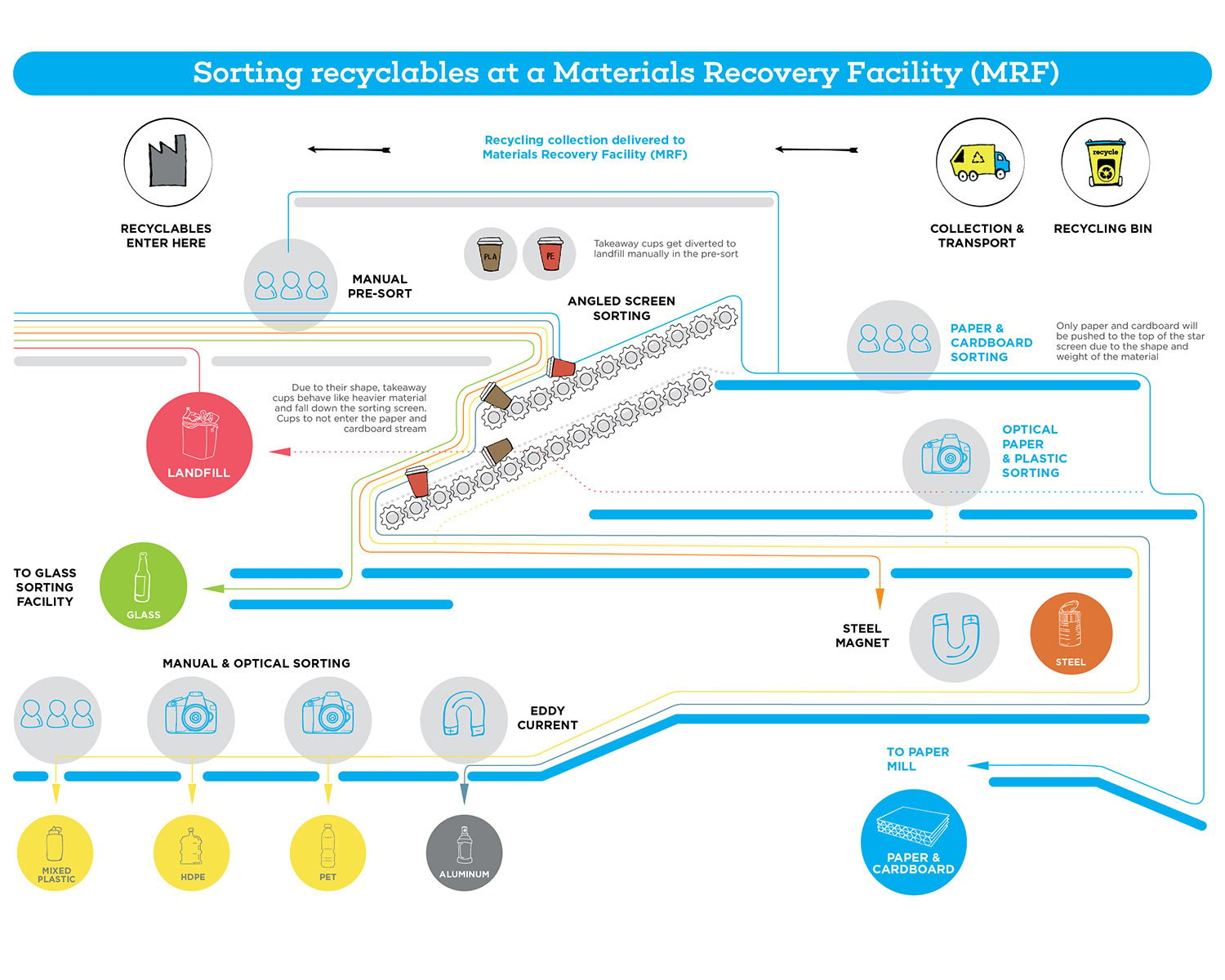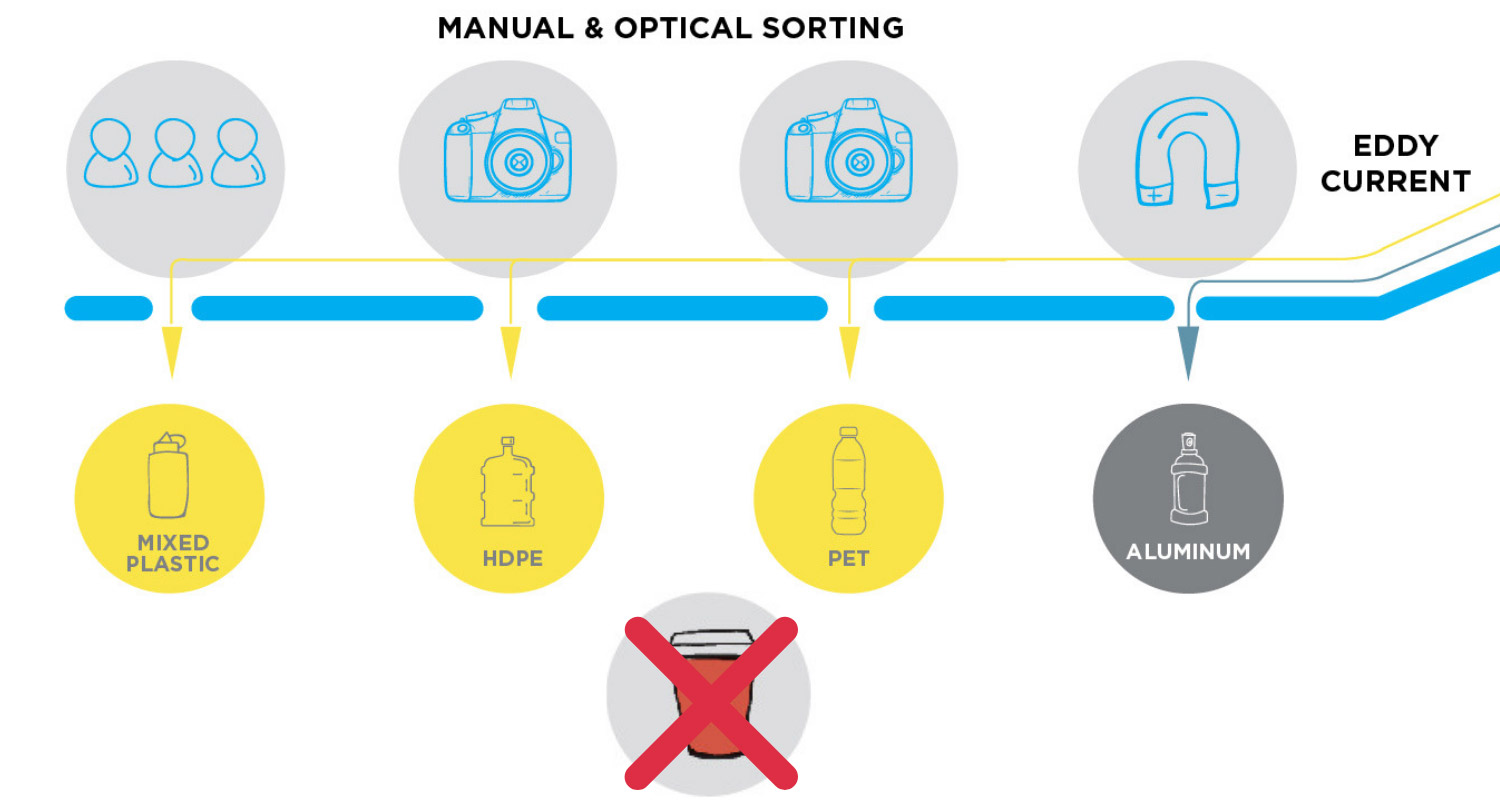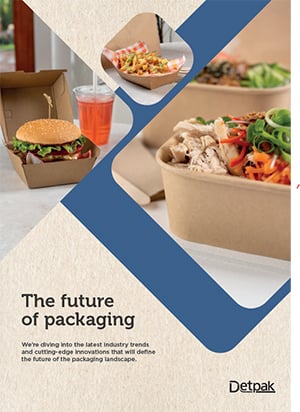Are you sure?
Are you sure? If you change your country now, any items you have added to your quote will disappear.
Your location
Please set your location to see relevant stock levels. Freight costs and taxes will be calculated once you log in.
Note: changing your location will empty your cart.
Cut the Rubbish: What happens to takeaway cups in kerbside recycling?
Are coffee cups recyclable? This has been the question on everyone’s lips for some time now and in short the answer is no (unless you are using RecycleMe™ cups and system!). Continuing our efforts to cut the rubbish, we are taking you behind the scenes to explain how recycling takes place.
Household and kerbside recyclables are collected by a recycler, and the truck will typically hold around 6 tonnes of mixed materials, which will flatten the paper and board items and many of the light containers in the load. This load will then be taken to a Material Recovery Facility (MRFs). Pronounced as "murf," the MRF receives commingled materials and uses a combination of equipment and manual labour to separate recyclables into bales of paper, cardboard, plastic, glass, steel and aluminium.

Entering the MRF, the materials initially go through a pre-sort, where staff manually remove large non-recyclables and divert them to ‘general waste’ destined for landfill – this includes the likes of plastic bags, pipes and carpet.
The stream is then run up over a series of rotating discs and wheels, carrying the 2-dimensional cardboard and paper up and over the screens into its own stream (mixed paper), whilst 3-dimensional containers and small items drop through the shafts.
Due to the shape and weight of takeaway cups, they behave like other containers and fall through to the bottom of the screen with plastic, glass and metals.


The next stages use magnets to remove steel, Eddy Current for aluminium, density blowers and crushers for glass and optical sorting to separate target plastics like PET and HDPE.
This is where paper coffee cups and black plastics are normally identified as a contaminant for the mixed plastic stream and end up being sent to landfill.
APCO and Planet Ark have released the PREP tool to help designers and Brand Owners navigate how their packaging and used items will behave in a MRF. Unfortunately in the case of coffee cups, even though manufacturers like Detpak have replaced plastic linings in single-use cups with recyclable coatings, they will not be able to be sorted into a usable stream through most MRF’s in Australia without capital investment.
But good news, now there is a way to recycle your cups!
The RecycleMe™ Collection System is a closed loop solution for recycling your takeaway cups. Backed by key industry partners, we can ensure that all cups collected are treated in the right way to be shredded and baled to go straight to the paper mill for recycling into paper products.
Update May 2024: Please note that Detpak no longer manufactures RecycleMe cups. However, you can still view the RecycleMe range here.


